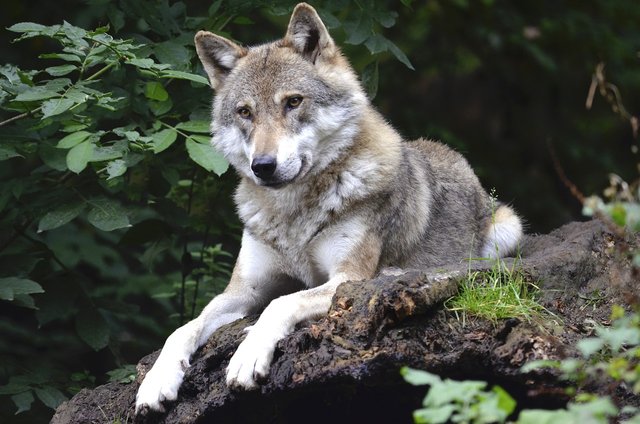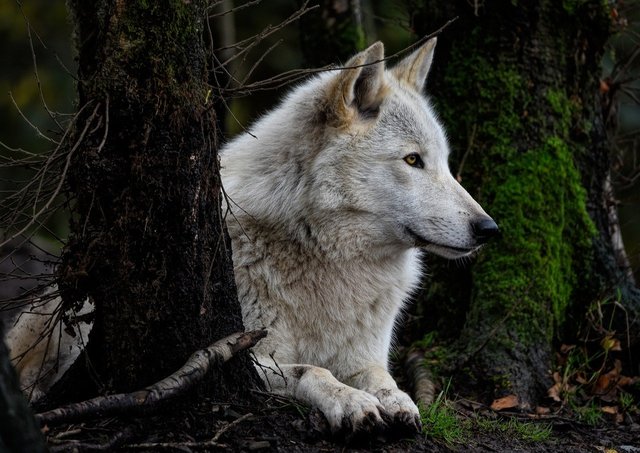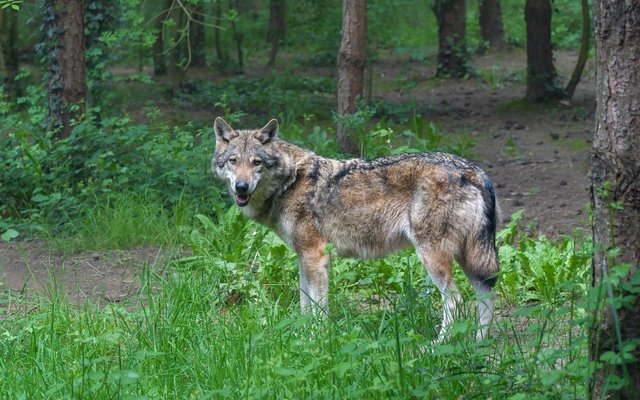
Wolves are one of some of the most interesting and respected social animal species in the world. Known for their high intelligence, extraordinary adaptability, and sophisticated hunting strategies, wolves play an important role in the ecosystem as apex predators in many of the regions where they live.
Physical Characteristics and Habitat
Wolves, or known scientifically as Canis lupus, are members of the Canidae family which also includes dogs and foxes. They have slender bodies and strong legs, which allow them to run fast and endure grueling hunts. The weight of an adult wolf can vary between 20 and 80 kilograms, depending on the species and geographical location. Their feathers are usually gray or brown in various shades and colors, which helps them camouflage themselves in their natural environment.
Wolves can be found in a variety of habitats, from boreal forests in the north to grasslands and deserts in the south. They are highly adaptive creatures and can adapt to a wide range of environmental conditions, although they tend to choose areas that provide sufficient shelter and easily accessible water sources.

Social Structure and Communication
Wolves live in social groups called packs or wolf families. Wolf packs usually consist of an alpha pair (a male and female leader) and their younger cubs. This system of hierarchy within the pack is very important, where the alpha wolf is responsible for decision making and protection of the pack, while other wolves in the pack have more specialized roles in daily activities such as guarding young or hunting.
Communication within a wolf pack is complex and involves a variety of visual expressions, sounds, and even body movements. They use their tails to convey emotions such as excitement or anxiety, while their vocal calls, including howls and barks, can signal threats or calls to hunt.
Hunting Behavior
Hunting is an important aspect of wolves' lives, and they have a number of strategies they have developed to efficiently catch their prey:
Encirclement: This strategy involves surrounding prey, especially large animals such as deer or bison. Wolves work together to direct prey in the desired direction and narrow its movement so that it has nowhere to escape.
Ambush: Wolves often stalk their prey carefully, using the hidden landscape to approach prey unnoticed. They chose the right time to attack with surprise and speed.
Long Chase: Although wolves are not as fast as some other predators such as cheetahs, they have incredible endurance. They can chase their prey over considerable distances, using collaborative strategies to drain the prey's energy and leave it vulnerable to a final attack.
Profit Sharing: After successfully catching prey, the wolf divides the meat fairly among its pack members. This helps maintain cohesion and cooperation within the pack, which is critical to their success as social predators.

Ecological Role
As top predators in many ecosystems, wolves have an important role in maintaining the balance of herbivorous animal populations. They help control the populations of the animals they hunt, prevent overgrazing on vegetation and help maintain biodiversity in their territories.
Human Interaction
The relationship between humans and wolves has varied throughout history. Although wolves are often given a negative reputation as livestock predators, it is important to remember that human-wolf conflicts are often caused by human interactions that cause habitat loss or decreased food sources for wolves. Several conservation efforts have been undertaken to maintain healthy wolf populations in various regions, with the aim of promoting safe coexistence between humans and this important predator in the ecosystem.
Conclusion
Overall, wolves are an example of the wonders of evolution and adaptation in the wild. They have extraordinary hunting skills, complex social systems, and an important ecological role in maintaining ecosystem balance. A better understanding of wolf behavior and life not only gives us insight into wildlife, but also promotes better conservation efforts to preserve this important species in the future.
Downvoting a post can decrease pending rewards and make it less visible. Common reasons:
Submit
Upvoted. Thank You for sending some of your rewards to @null. It will make Steem stronger.
Downvoting a post can decrease pending rewards and make it less visible. Common reasons:
Submit